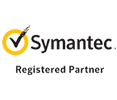
Blockchain
What Is Blockchain and How Does It Work?
Posted on January 3, 2018 in Uncategorized
The blockchain is the technology behind Bitcoin, Ethereum, Litecoin and other cryptocurrencies. While these are the most well-known uses of the blockchain, its benefits mean it has far-reaching implications for finance and data security beyond the cryptocurrency industry.
The blockchain is a distributed database (a database which is stored on many different devices). This means that recorded transactions are verified by hundreds or even thousands of different actors (also called nodes). The number of nodes makes blockchain far more secure than a simple database stored on just one device: you can’t just change one copy to commit fraud – you have to change thousands.
How does it work?
Blockchain Tracks and Verifies Transactions Using Blocks and Keys
The distributed database holds a list of transactions, which are called blocks. These blocks stack up in a chronologically-linked chain; each one is time-stamped and references the block before it. These blocks exist in a strict order which cannot be changed.
The blocks and the transactions they hold are public, and anyone with a copy of the database can see them. It is impossible to make a change to an old block without the nodes noticing, flagging and rejecting the change.
When a transaction is made, it is verified using two keys: one private, one public. The private key is known only to the account holder and is used as a signature to confirm who the transaction has come from. The public key, which everyone has, can be used to decrypt and authenticate the transaction, but cannot be used to create a transaction; this prevents a user from creating false transactions.
What Are The Advantages and Disadvantages of Blockchain Technology?
Because of the way it works, blockchain has several key benefits:
An Unchangeable Database – The data held on a blockchain cannot be changed. Every transaction, once logged and accepted, is held on the chain and kept there forever. This makes it highly transparent and makes auditing transactions easy.
Reduced Costs – Transactions are verified by the nodes holding the blockchain, which means that traditional middlemen (such as banks) aren’t needed. Banks are investing heavily in the blockchain because if they ignore it, they might find themselves not needed.
Users Are Empowered – The blockchain allows users to have full control over their transactions and data. For example, the blockchain could enable individuals to have control over who accesses their medical records.
As with any system, there are also disadvantages:
Verification Bottlenecks – The cryptographic system used to sign and check transactions is complex, and requires a lot of computing power. This means there is a limit to how fast transactions can be processed.
More Work – When a transaction occurs it must be processed by every single node that holds a copy of the database (which could be thousands). This is a lot of extra computational work compared to a traditional database, where the transaction is processed just once.
What Can Blockchain Be Used For?
Blockchain can be used anywhere where a transparent, unhackable database would be useful, and businesses and governments are testing a wide variety of use cases. There is a high level of hype and excitement, but in this case, it might actually be justified – blockchain really does have the potential to revolutionize many industries.
For example, blockchain could be used to prevent voter fraud by being used as the platform for an unhackable vote-counting system which would both securely check voter’s identities and prevent changes from being made by a third party.
Another use case is as a means of authenticating ownership of a unique item, such as a piece of art. The art piece would be paired with a digital token, which could then be bought or sold. Even if the art piece was physically stolen, the original owner would still hold the ownership digitally. Any attempt at selling it on would fail because anyone would be able to look up the true owner.










